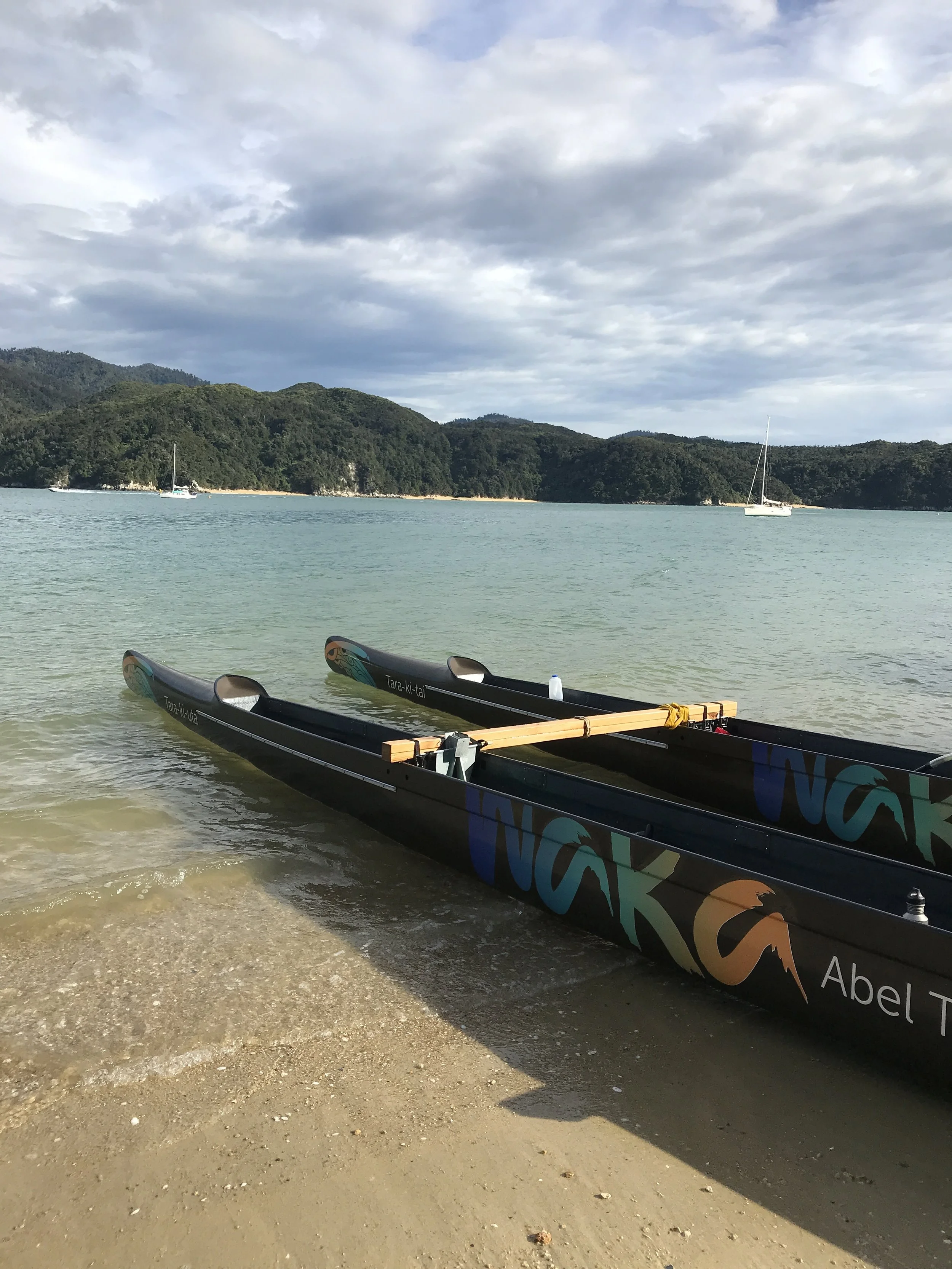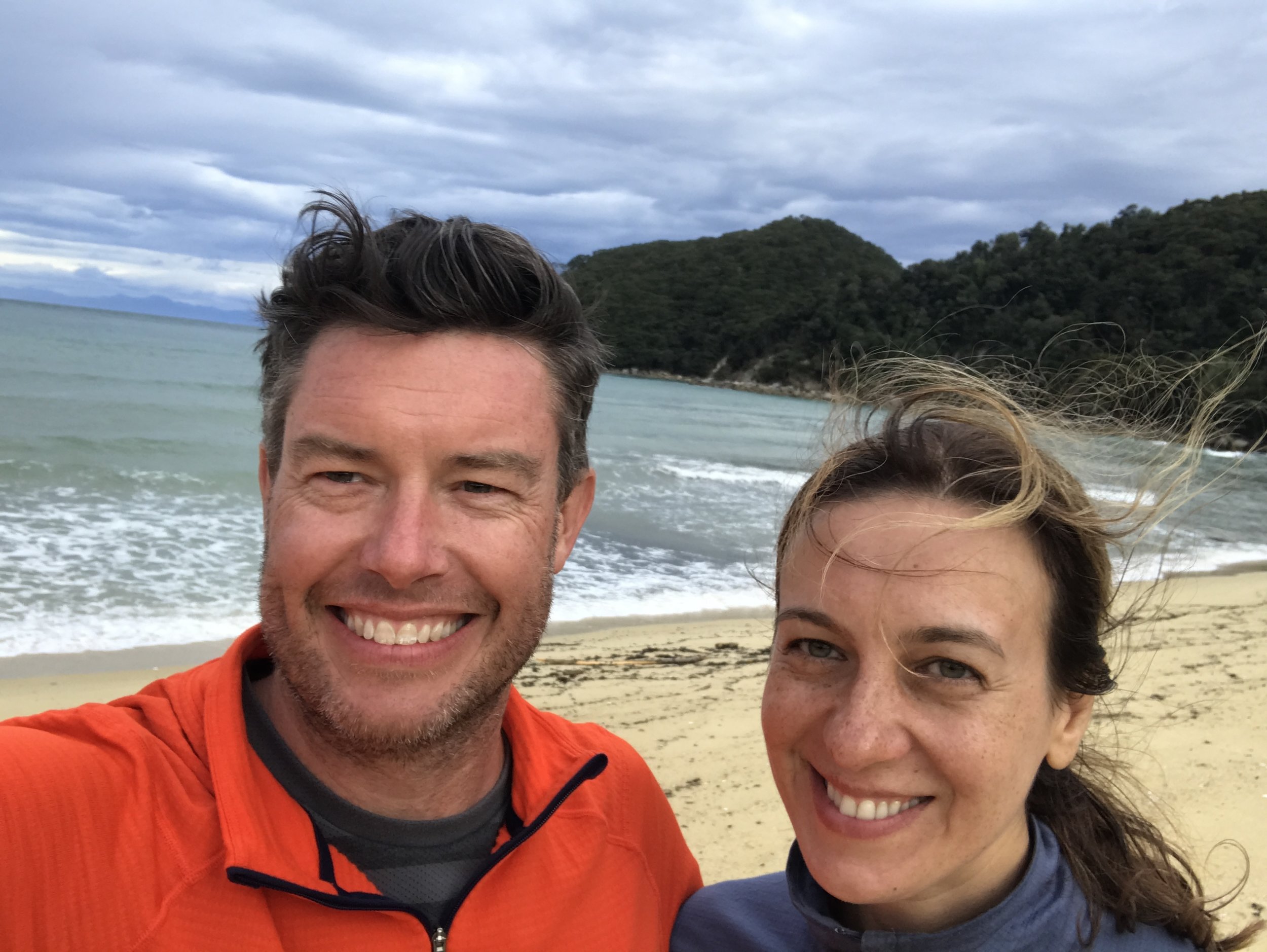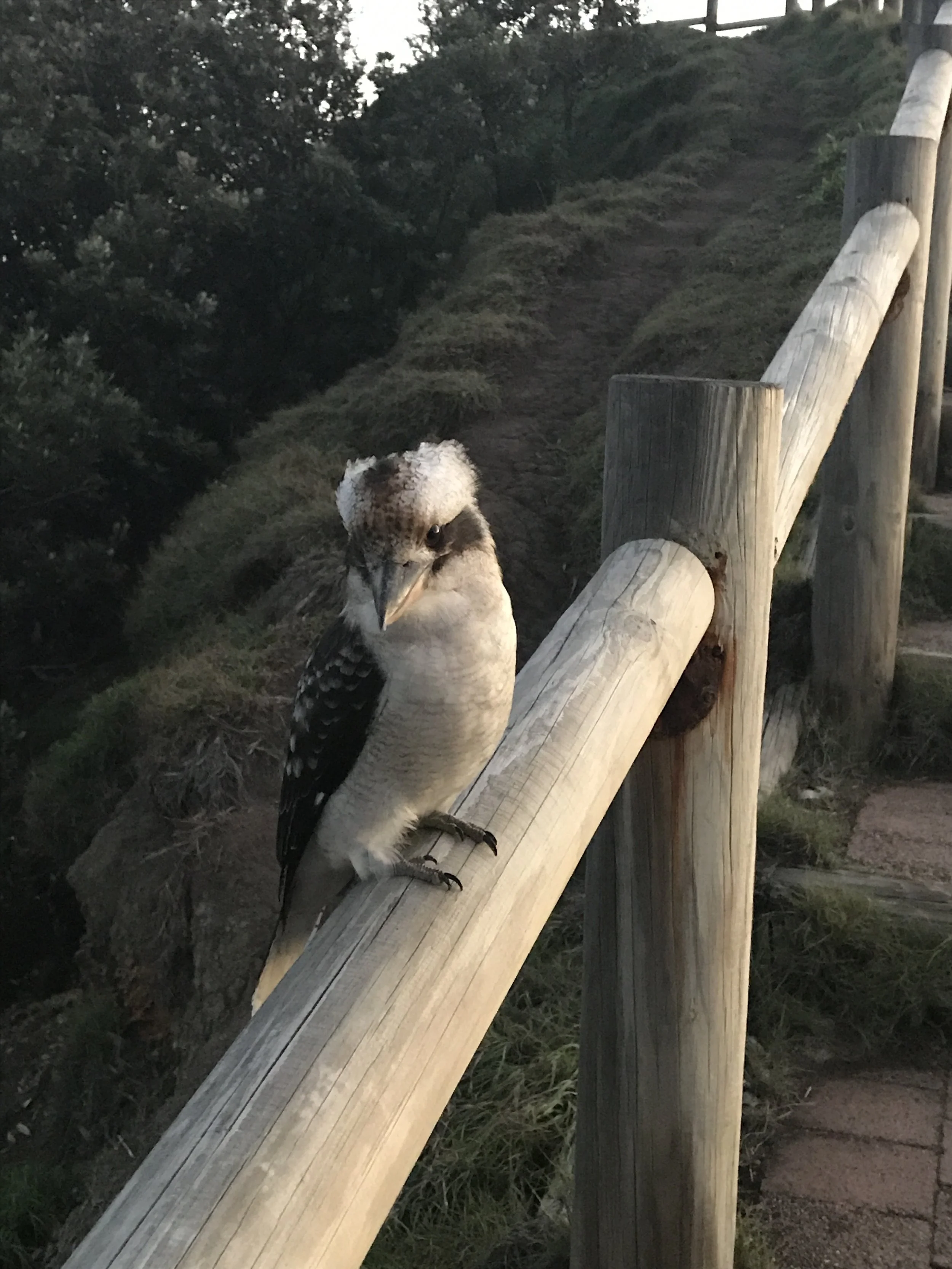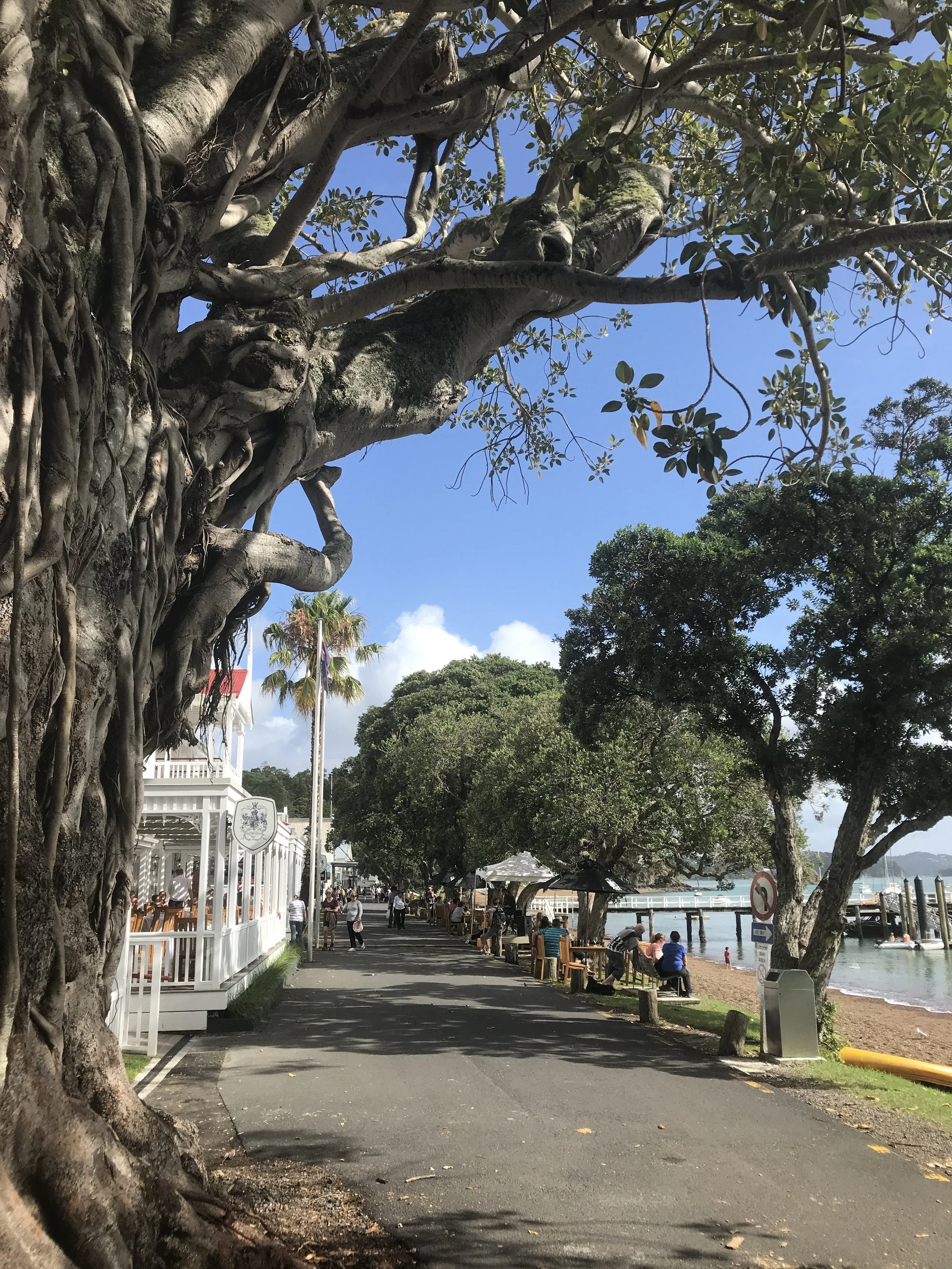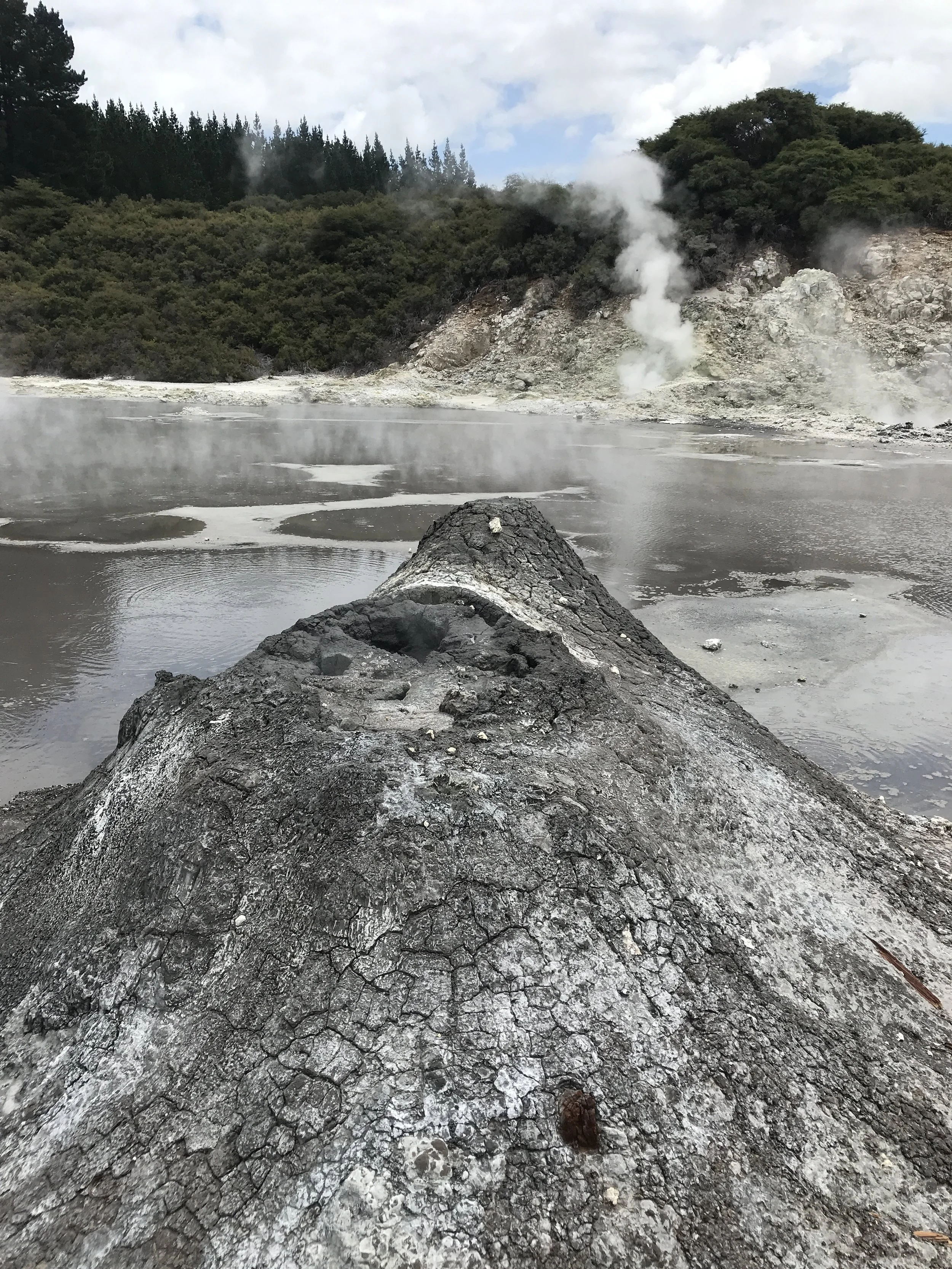HUP in the Abel Tasman
“Hup!” - the loud call of the Maori teenager pierces the winds and the waves. Sitting in number 5 of the outrigger canoe, I count the remaining one and a half strokes and watch the movements of the rowers in front of me. In unison, we switch the paddle from one side of the canoe to the other and continue the rhythm which propels our vessel forward in the Tasman Sea.
Brent and I are part of a team rowing a waka, a traditional Maori outrigger canoe. We’re paddling back from Bark Bay to Kaiteriteri on the North Coast of the South Island, a distance of over 15 kilometers (about 10 miles), which we cover in just a couple of hours, smoking all the kayaks on the way. The sea spray is covering our hair and clothes and once in a while a wave washes over the wake, soaking us completely. And yet, we’re happier than ever and completely in the flow.
After my trip to Australia, I take a short flight from Chirstchurch to the north city of Nelson on New Zealand’s South Island. The domestic airport in Christchurch is about the size of a large bus station and follows the same principles - you sit in the main lounge areas and the various local flights get called about 5 minutes before they’re supposed to take off. You scan your boarding pass at the gate and then proceed to walk to the aircraft. There’s no security screening or other hassles. Just show up and go. I think wistfully that this is what all travel must have been like in the past, not just domestically in New Zealand, but around the world. Now people spend more time going through the airport than flying.
Mountains by Nelson - as viewed from the plane
Brent picks me up in Nelson, which is the smallest airport after Queenstown that I’ve seen and about the size of a McDonalds. Our plan is to walk the Abel Tasman track, another Great Walk in New Zealand. Because of its Great Walk status, it attracts a ton of foreign tourists, so Brent has already booked us in some campgrounds on the track a few weeks prior.
We learn in the DOC (Department of Conservation) office near Nelson that Cyclone Gita, which hit in February right after we returned from the mountains, has wreaked havoc on the Abel Tasman and the surrounding communities. Parts of the trail are cut off and some of the campgrounds have been submerged under a few meters of freshly deposited layer of sand, shrinking their size and killing off the surrounding vegetation. So we have to make some adjustments to the plan if we want to see part of the coast.
Kaiteriteri beach - near the beginning of the Abel Tasman trek
The town of Kaiteriteri as seen from a hike
While we organize the new plan, Brent and I stay in the Holiday Park at Kaiteriteri - the cute little beach side town in New Zealand where Brent and his family would spend a summer holiday when he and his brother were growing up. I’m getting used to the Holiday Park model of New Zealand vacations - you see people who have parked their campers or pitched their large tents and have set up camp for an extended period of time. Children run around and play, people go about their day cooking and cleaning. It resembles a little nomad village and reminds me a bit of the camping vacations I and my family would take on the Black Sea Coast until the early 1990’s when times got tough. Thankfully, now at the end of February, the Holiday Park is not as crowded and we can pick up a spot that’s further away from most people and close to the green boundary. And then we keep our fingers crossed that no cheap Euro-style camper van will park right next to us and crash their sliding doors open and closed all night long (which sometimes happens).
Our campsite in Kaiteriteri Holiday Park
The resident mother duck and her ten ducklings
On our drive in to Kaiteri, it was easy to locate the street and the house from the family photos. To our surprise, the house was still there and it hadn’t been visibly changed, except for maybe the exterior paint. We stood in front of the house and recreated some of the photos of Brent, some decades later. It was very special taking a walk down the “memory lane” of Brent’s childhood - walking through the tidal lagoon in front of the house, seeing the same little burrowing crabs that Brent and Karl used to play with and taking a ride on the old but well-maintained flying fox.
Kaiteriteri, or Kaiteri for short, holds a special place in the heart of many Kiwis who take their families to the Holiday park or a home in the quiet town for a fun-filled summer holiday. Brent’s family photo albums are stock full of photos of him and his younger brother on a boat, on the beach and at the estuary in front of the house they would rent with another family. The faded yellow photographs, meticulously labelled, tagged and arranged by Brent’s mom Christine, tell a story of simple but fun time. There’s Brent and his brother and their dad in the metal row boat. Here’s Brent’s brother Karl on the flying fox - a simple one seater zipline setup that is still maintained and in existence today. And here’s the whole family lined up at the front of the beach house.
Brent in front of the Kaiteriteri house where he would spend his childhood summers
Brent at the tidal lagoon in Kaiteriteri that he would cross as a kid
Our original plan for walking the Abel Tasman had been to take a water taxi from Kaiteri to Mutton Cove at the top of the track and then take a few days to walk back down the coast. But now that Mutton Cove is cut out, we decide to book the longest day kayaking trip that we can find - one that takes us from Awaroa Bay to Bark Bay in a day - and transform the first part of the trip from land-based to a water-based journey. We then plan to walk from Bark Bay to Marahau, where we have left our car at the kayak company parking lot.
The morning we drive to the kayaking company base it’s obvious that the weather has taken a turn for the worse. We get loaded on the water taxi, a motor boat with the rows of plastic kayaks stacked neatly at the back and then get driven on a trailer hitched to a tractor to the water’s edge. The whole beach looks like a scene from Transformers - large machines crawling the beach like some giant spiders, delivering their little boat loads to the water. And then we’re off. Because of the rough weather, the ride is choppy and our group at the back is soaked to the bone from the spray of water. Couple that with cold and windy weather and I’m left shivering by the time we unload at the beach in Awaroa.
Tractors depositing kayaks in Marahau, at the bottom of the Abel Tasman Track
The kayak guides have decided that the weather is too rough for us to circumnavigate the coast to Barks Bay, so the plan is to kayak around Awaroa Bay and then around Awaroa Lagoon. The lagoon is the largest tidal pool in the South Island - during high tides it fills a large area with up to a meter or more of water. It is this part of the Abel Tasman track that has people waiting on each side of the lagoon for the low tide - the stretch can only be crossed within an hour and a half of the low tide, making it passable for only a few hours in the day. That’s why hikers have to consult the tidal tables to figure out when they can cross and continue on their trek.
At the start of the kayaking trip in Awaroa
Kayaking in the Awaroa inlet
The kayaking around Awaroa is nice and sheltered but not spectacular. Our group is a mixed bag - the guide, a young girl, is extremely friendly and nice but not as knowledgeable about the area as we would like. And one of the group members is inept at rowing, leaving us and two other kayaks constantly having the wait for the laggards. The same person also declares she’s sea sick, so we can’t really kayak out in the open water like the other group does. To compensate for the slow going, on the way back out of the lagoon, our guide opens up a sail that she has packed, gathers the kayaks in a group and shows us how to unfurl and steer the sail. All of a sudden, our group of kayaks finally picks up some speed and some excitement.
The true surprise comes in the evening when we get dropped off at Barks Bay by the water taxi. The campground has been severely hit by Gita with a fresh layer of sand deposited on top, which is causing the trees in the campground to wither and die. The camp ranger tells us to be careful not to have a tree fall on us in the night. It’s a bit windy but we love that we’re camping right on the beach and able to listen to the sound of crashing waves all night long. Across from the campground is another tidal pool and now at low tide, a group of school children have come out from the nearby hut and set up wickets for a cricket game. It’s fun to watch them hit the ball and run around the mud.
Group of kids playing cricket in the Barks Bay Inlet on the Abel Tasman
There’s another group of older children -teenagers that are camping in our campground. A lot of them are Maori and I see the camp leader - an older boy - talk to them in the cooking area about how they can cook healthy at home by stir-frying veggies at home. As I prepare my own meal, I see them gather in a circle and sing a Maori blessing. I listen intently and can recognize a single word - “Aotearoa”, or the Maori world for the “land with the white cloud”, New Zealand. After the blessing is done, I ask the camp leader to tell me more about what the prayer means.
Back at the campsite, Brent has just returned from a stroll on the beach and he’s eager to tell me about the waka that he has seen. Waka is the Maori word for a Polynesian outrigger, similar to the types of outriggers that would fascinate me in Hawaii. I remember being transfixed watching the perfectly synchronous movements of the paddles, the beautiful lines of the boat and their incredible speed. I follow Brent to the beach to take a look myself. This waka is a double-hulled one, and as we learn later is called “waka taurua”, as opposed to the single hulled “waka ama” that has a supporting beam strapped on the side. There’s a man in a baseball cap tending the waka, cleaning it and organizing some of the equipment. We introduce ourselves to the man and want to learn more about the waka. Todd, the owner of the waka, tells us that he and his wife run a fledging business of taking out groups on this traditional canoe. He’s now doing a trip with the group of teenagers that I met earlier and they are with Whenua Iti (pronounced "Fenua Iti") - an organization similar to Outward Bound in the US that has as its mission to educate young people in leadership through outdoor skills and learning about their Maori heritage.
On our walk on the Barks Bay beach
We spot the waka up on the right on the beach
We have a nice chat with Todd and then go back to the campsite. Half an hour later, Todd finds me in the cooking area and asks me what Brent and I plan on doing the following day. He then says that he has two empty seats on the waka and issues a surprise invitation for me and Brent to join the group as they paddle back to Kaiteri the following day in the morning. He can use the rowing power and it would be great for the kids to have some guests on board. I’m stunned and excited and as Brent comes over and I tell him about the invitation, he’s thrilled and we accept on the spot. Todd introduces us to the camp leaders and makes arrangements for the children to show us the techniques and protocol around the waka later that night.
Jay and a few other youths come over to our campsite after dinner. They are friendly and gregarious and want to know more about who we are and where we come from. They seem quite impressed when I say I’m from Bulgaria but half-Russian. “Oh, Russia, wow!”. I really enjoy their energy - they are engaging and open and fun. Jay takes us to waka on the beach where he gives us a run down of the customs, techniques and Maori commands for our journey. It’s quite complex and there’s a lot to learn. Protocol is important - the waka represents a Maori god and as such cannot be stepped over, but always needs to be approached from the side. Same with the “hoy” - the paddle, it represents the head of a God and as such cannot be thrown around lightly. Jay also tells us that Todd, the owner of the waka, is part of New Zealand’s waka team that has just won the Waka World Championship the prior year. It had been a surprising win since Fidji tends to dominate the sport most of the time.
Brent and I are excited and as Brent has practiced white water kayaking in college, he takes it on himself to do another practice run of the waka paddling technique back on the campsite. I give it a try as well - we need to be as dialed in tomorrow as possible to avoid embarrassment.
The following morning greets us eager and ready to go. We eat and pack away the tent by 7:30am and drop our packs off with the rest of the group’s, to be picked up by the next water taxi and taken to Kaiteri. The kids are getting excited but I can tell that some are a bit wary of the long paddle back. We need to cover about 15 miles and the sea is rough. We’re looking at three hours of solid paddling at least.
The backpacks packed and ready to go on the water taxi while we Waka
Getting ready to set off on the Waka
Taking the Waka down to the water
Todd breaks up a debate about who’s going into which seat number, letting everyone know he’ll make the call about seat assignments. I see Todd take firm control of the situation from the first circle we do on the beach - all of us circle around and put our arms around each other. Todd and the other leaders give us a few encouraging words about the trip ahead. As we break the circle, we are starting to feel as one unit.
Putting the waka into the water is also done with ceremony and intention. All of us carry the vessel to the water and as we put her in, we say a short Maori prayer for blessing on the journey ahead. I think of all those times in centuries past when Maori people have set out to distant seas and lands, without the benefit of a charted course and a water taxi to haul all their belongings. As we get into the water and start paddling, the first two waves crash onto us, soaking us completely and filling the waka partly with water. But there are four buckets with scoops and sponges positioned strategically inside the hull - we’ll be bailing water as soon as we cross the shore break into open water. But before we begin rowing, Todd gives the initial call to the Maori waka salute - the traditional warrior-like call that gets the whole team organized and moving in synch. Following the end of the call, our rhythmic paddling begins.
Lisa in seat #5 at the Waka with Todd in the back during a break
There are a lot of things to think about while paddling. The strongest and most experienced paddlers are up front and one of them is charged with calling the switch of directions for the hoy (paddle). The switch needs to be precisely executed with respect to timing because that’s what contributes to the speed of the waka while keeping it stable. In fact with the single-hulled waka ama, a poorly executed transition of the paddle direction can often cause the whole vessel to capsize. The risk is almost nonexistent with the waka taurua (the double-hulled waka we’re on), but it can nonetheless slow the speed down. The caller yells out “HUP!” every 14 strokes, after which you need to count 1 and a half strokes and then switch directions at the same time. To balance the body stance, the paddler also switches the orientation of the legs - the leg on the paddle side is extended forward while the other leg is tucked under the bench.
Brent and I are in seats #5, directly across from each other in the two hulls of the waka. Todd sits in the last seat on the right hand side of the hull, directly behind me. That position allows him to have an overview of everything and everyone on the waka and he’s laser focused. If he’s not giving instructions for someone to bail water, or noticing if someone’s tired and giving them a word of encouragement, he’s monitoring the weather or direction or letting us know to stop for a break or get going. Most often he would simply rally the team together. When people got distracted, he would quickly summon the power of the collective by yelling “All together now! Push!”, at which point the waka would surge forward as if powered by a mysterious force. We smoked every single kayak that we passed as if they were standing still.
Once in a while the group would break into Maori chants that would cut through the sound of the paddles and the sea. At that point, if I wasn’t busy rowing and staying in synch with the rest of the team, I would be tempted to pinch myself. Even though the weather was a bit windy and choppy, we had beautiful sun and on the way back to Kaiteri stopped on Turtle Island for a break. The island is known for its seals and we saw a seal or two but the best part was stopping on a small beach. The kids put out the snacks and did a little Maori blessing, after which they invited the women and the guests to go first. As a female and as one of two guests, that meant I went first. I took one of the sponge cakes and Brent took a piece of something and then the kids descended on the rest of the snacks. The beach also gave us an opportunity to hear a proper Maori conch shell sound. While on the water, Todd had tried to play the conch but due to the waves crashing on the waka and filling the conch with salt water, the sound that came out was uhm… shall we say… not as dignified as normal.
Here’s the sound of the shell filled with salt water:
And here’s how the conch shell sounds when it’s not filled with water:
The most important rule that Todd taught us was “Rule Number One”. That rule came into play whenever there was another boat in sight or we were in view of people on the beach. For someone with a nascent business and not enough of a marketing budget to compete with the dozens of other water-based guiding companies in Abel Tasman, I realized that Todd and his wife and business partner rely primarily on word-of-mouth as a way to get business. So anytime we would spot a potential audience, he would say: “Ok guys. Remember, RULE NUMBER ONE! Look good”. And we did. Paddles went up, backs straightened and the waka moved forward gracefully under our coordinated efforts. And we sailed back to Kaiteriteri in style.
To check out Todd's Waka business in Abel Tasman, see the Waka Abel Tasman website.
Back at Kaiteriteri beach

